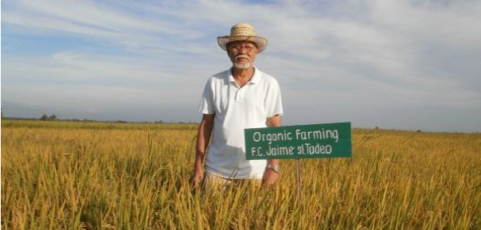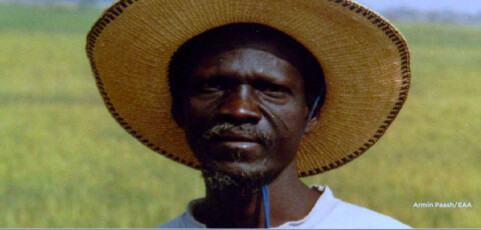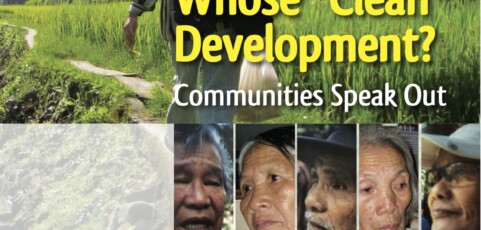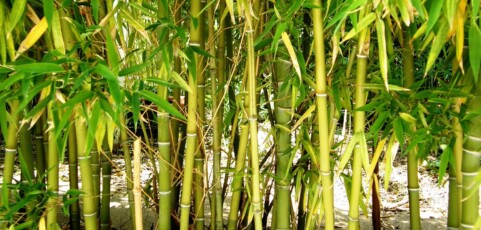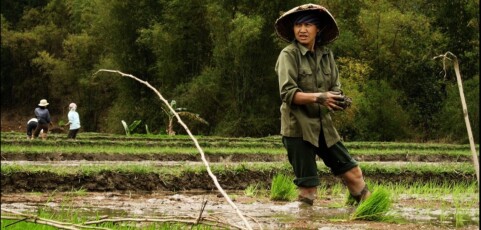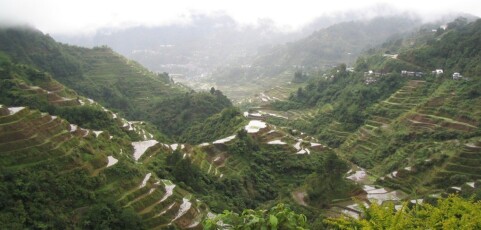In agroforestry, farmers plant more than one type of crop and in different heights – a concept called multi-storey cropping. Like in the Marjes’ farm, you’ll find coconut trees or tall fruit trees watching over everything.
In lower levels are shorter fruit trees, coffee or cacao trees, and herbal plants. On the ground are pineapples, tuber and root crops like cassava, potato, and peanut.
Organic farming at the Center stage in South East Asia
In a first part, this publication gives technical feedbacks and analysis on Sustainable Rice Based Farming Systems in the Philippines. The book concludes that Organic farming is undeniably, one of the best broad-based development strategies that can be employed to revitalize the agriculture sector. Read more
Tipping the Balance: Policies to shape agricultural investments and markets in favour of small-scale farmers
A recent wave of large-scale land acquisitions and other commercial investment in agriculture has raised concerns that small-scale producers are being marginalized. This report takes a new look at the role of public policy and market governance in ensuring inclusive sustainable development. It also foucses on elements that can contribute to gender-equitable results. Four country case studies, conducted in Guatemala, Nigeria, Tanzania and the Philippines supports this work.
Nourishing the World Sustainably: Scaling Up Agroecology
The paper contains 12 different case studies and chapters on agroecology; other sustainable farming methods; agroecology and resilience to climatic changes; evidence of the food security potential of agroecological systems; the scaling up of agroecological innovations, with challenges and opportunities; the approaches that can be used for scaling up agroecology ; conclusions and way forward.
Whose “clean” development? Communities Speak Out
Three case studies from India, Philippines and Thailand on Clean Development Mechanism:
Our analysis, and that of many communities and organisations across Asia, is that the CDM is an extension of the generalised approach to big project and energy intensive development that has systematically marginalised indigenous peoples and local communities and over- exploited the Earth. The “clean development mechanism” is, quite simply, a mechanism that allows polluters to avoid binding emissions reductions in one location, while shifting emissions to another location. At the same time, it allows corporations and state entities to reap additional profits from projects that are questionable in terms of sustainability, community benefits or even addressing climate change.
The Agro-ecological Village Development Model: Experiences in the Philippines and China
An agro-ecological approach to rural development in the Philippines and China, devloped by Resource Efficient Agricultural Production Canada (REAP-Canada).
The Campesino-to-Campesino agroecology movement of ANAP in Cuba: social process methodology in the construction of sustainable peasant agriculture and food sovereignty
The Cuban experience demonstrates that we can feed a population well with a small- or medium-sized farm model based on appropriate ecological technology, and in doing so we can become more self-reliant in food production.
Agroecology and Advocacy: Innovations in Asia
The Asian Farmers’ Association for Sustainable Development and the Institute for Agriculture and Trade Policy have produced a new report documenting successful approaches in three countries: Cambodia, Philippines, Indonesia. The three case studies presented in this report represent successful approaches, both in terms of the techniques they have applied, and because of the active involvement of farmers’ organizations in changing the policies needed to ensure their success.
Impact Analysis of Organic Farming in Rice Agroecosystems in the Philippines
Paper presented during the 1st RDA/ARNOA International Conference on Asian Organic Agriculture held at Suwon and Cheonan/Korea on November 12-15, 2002.

